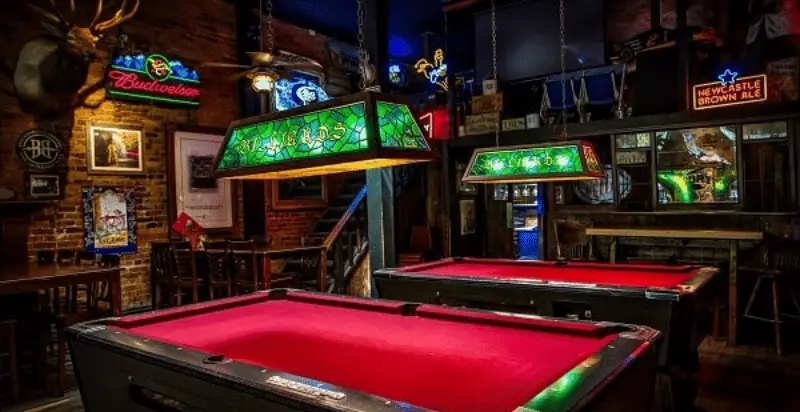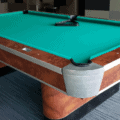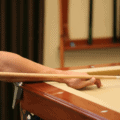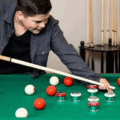You won’t believe how far back the history of the pool table goes!
Or how rich the history is for that matter!
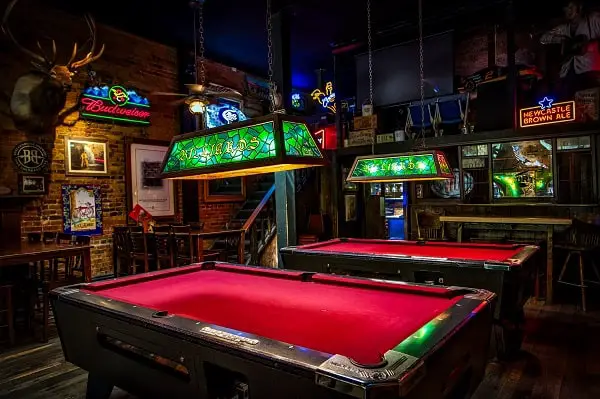
1300s to 1600s
As far back as the 1300s in Northern Europe, the lawn game of croquet was turned around into something completely different when it was moved indoors, due to weather constraints as you might imagine, onto a wooden table with green cloth in place to simulate grass!
To this very day, pool table cloths generally remain green, true to their indoor croquet origin.
A border was placed around the edges, to stop the balls from rolling off, and the balls were shoved around with wooden sticks called maces, shaped much like the hockey sticks of today. It is thought that during this time hoops were put in place, like in croquet rather than pockets.
It is believed that King Louis XI of France (1461–1483) had the first known indoor billiard table. It is thought that he refined the game which then went on to grow in popularity among the French nobility.
Most of our information about early billiards and pool playing comes from various accounts of playing by royalty and other noblemen.
In 1587, whilst imprisoned at Fotheringay Castle for her complicity in a plot to murder Queen Elizabeth I, Mary, Queen of Scots complained of being deprived of her billiard table. And later that same year at her execution her body was covered with her billiard table cloth.
But whilst our accounts of the early beginnings of the game come from high society, it’s thought that the game was played by people from all walks of life. The game really took off spreading far and wide.
1600s to 1800s
In fact, knowledge of the game became so widespread over time that William Shakespeare felt it would be broadly understood when he came to write the play “Antony and Cleopatra”, which was first performed as far back as 1607.
According to CliffNotes, “The idea of thrusting balls into pockets with a long billiard stick gives Cleopatra plenty of opportunity to tease [a] eunuch about his physical disability.”
Billiards reached the American colonies in 1710, and America’s first ever president, George Washington was believed to have played billiards in 1777.
It is also thought that King Louis XVI and Marie Antoinette engaged in a game of billiards on the eve of the French Revolution in 1792.
As time went on the tools of the game were refined. When the ball lay near the border, the mace was very inconvenient to use because of its large head, so players resorted to turning the stick around and using the tail end to strike. And so, at about 1800, the straight cue that we see today was born.
When the straight cue first came about, only men were allowed to use it, because it was thought that women using it would rip the pool table’s cloth. They were however still allowed to play, but using the original maces rather than the cue.
1800s to 1920s
It was around the advent of the new straight cue that it was decided that the borders of the table, the cushions (also known as banks), be stuffed with substances to allow the balls to rebound, in order to further enhance the appeal of the game.
It was also around this time that they began to use chalk on the tip of the cues to further increase the friction between the ball and the cue stick even before cues had tips.
Napoleon Bonaparte also played billiards, and when dictating his memoirs, he would often spread out maps on the billiard table.
Then 1823 saw the origin of the leather tip on the cue, and players were able to use side-spin on the billiard balls.
A growing demand for pool/billiard tables sent one John Thurston into action, and in 1835, he began trying slate for the table bed rather than wood. Then in 1845, he began using vulcanized rubber cushions for the pool tables.
To this day, many high quality pool tables still use thick slate for the table bed, in order to prevent any warping or other changes that can be caused by changes in the temperature or humidity.
The early billiard balls tended to be made from wood and clay, but the rich preferred to use ivory balls.
It was in the year 1850 that the pool/billiard table had fully evolved to its current form. Until that point in time there were no fixed dimensions for the table size or table proportions. It was at this point that the two-to-one ratio of length to width became standard.
In 1864, American President Abraham Lincoln became a self-confessed "billiards addict."
Until the 1870s, the dominant American billiard game was Four-Ball Billiards, which was a direct extension of English Billiards.
It was in 1888 that a version of pool, much like the one we know it today, was started. In Fifteen-Ball pool, there were 15 object balls, numbered 1 through 15, and when a ball was sunk into a pocket, the player received a number of points equal to the value of the ball.
Since the sum total of the ball values came to 120, for a quicker game play, the game was refined so that the first player who received more than half the total, 61, was declared the winner. This was called 61-pool.
Meanwhile, the dominant billiard game in Great Britain was English Billiards, a game played with just 3 balls on a 6-pocket rectangular table. This is a game that also evolved quite significantly, and today the dominant British billiard game is snooker.
Throughout the 1800s, patrons betting on horse racing in a betting parlor known as a “poolroom” and pool tables were installed in these poolrooms to help patrons pass their time between races.
This poolroom was a place where men would gather to smoke, fight, bet and play, it was an intimidating place for a woman to be and women were rarely welcome there.
Eventually, the term “poolroom” later went on to refer to a room where pool was played, rather than meaning a place where men bet on races and such.
The early 1900s saw the introduction of some new more specific games, such as eight-ball, straight pool, and nine-ball.
1920s to 1960s
Soon after, both pool and billiards shared the spotlight, and pool and billiard championship tournaments were held almost annually. Players became so renowned that cigarette cards were issued featuring them.
During World War 2, pool became a popular way for the troops to relax, and professional players often toured military posts giving exhibitions, to boost morale.
It was quite different after the war however, returning soldiers turned their interest towards family and such, and poolroom after poolroom closed down, and became almost, but not quite obsolete.
1960s to 1990s
There were two movies in particular, which really rejuvenated the billiards and pool scenes. First there was “The Hustler”, a black and white film depicting the dark life of a pool hustler starring Paul Newman as lead. And poolrooms began to flourish in America once again.
Later in 1986, Tom Cruise took the leading role in “The Color of Money” which was the sequel to “The Hustler”. Excitement for pool was brought to a new generation of players, and poolrooms became seen as a more upscale place to be.
Today
Today you’ll find pool tables in many sports bars, poolrooms and even homes across the globe.
The standard regulation tables are always found in the same length to width ratio that they were made in way back in 1850. The 8 foot and 9 foot long varieties are the ones used in championship games, whilst smaller tables are often used where space is at a premium, so long as they meet the same length to width ratio.
Although the game has seen a lot of variation, as new forms of pool and billiards have evolved, many aspects have stayed pretty much the same. They feature the same green colored cloth for example. And whilst some manufacturers still use slate table beds, a more common, more affordable MDF table bed is usually in play today.
And whilst snooker is the favored billiard game in Britain, pool is most popular in America and is by far the most popular American version of billiards. Pocket billiards are also hugely popular in a whole host of other countries including such likes as Canada, Australia, China, the Philippines, Taiwan, and Ireland.
Today there’s a seemingly endless list of celebrities who play or have played pool, Fred Astaire, Brad Pitt, Nicolas Cage, Sean Penn, John Wayne, Julia Roberts, Keith Richards, Marlon Brando, Mark Twain, Martin Luther King....
Today pool playing is big business. The world’s largest pool tournaments take place in America’s Las Vegas. Every year thousands of APA (American Poolplayers Association) members visit and compete in pool tournaments. On average, a mid-level pool player can make around $50,000 a year, with the top-earning pool players making hundreds of thousands of dollars or even millions.

I’m Lia and I love playing games. I started this site to share things with friends and they encouraged me to post more and now I’m trying to share things with the world – indoor and outdoor sports, and board and bar games. I write about things like Bocce, Croquet, Billiards, Darts and other fun ways to enjoy time with your friends and family!

